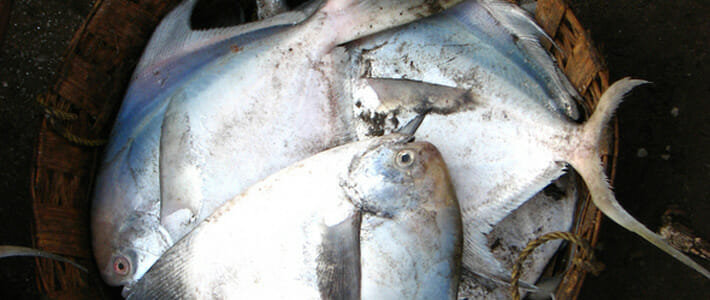Mong Chong

Mong chong is known by other names like Monchong, sickle (big-scale) pomfret, hire jiro monchong (Japanese), and mukau (Hawaiian). The mong chong or sickle pomfret is one of two species of pomfret. It is distinguished by the forked shape of its fins and large scales. It is a deep-water fish that is brought into local ports by longline and bottom-fishing boats. Mong chong is called the “Utopia Fish” by Japanese longline fishermen. It has a highly transparent, clear, white flesh with pinkish tones. It has a high oil content and good shelf life. Mong chong can range from about 4 lbs to over 25 lbs, but the prime market sizes are fish over 12 lbs.
Product pdf for download-
3 oz. raw edible portion
-
Calories 125
-
Total Fat 6g
-
Saturated Fat 1g
-
Cholesterol 50mg
-
Sodium 60mg
-
Carbohydrates 0g
-
Protein 17g
Interesting Fact
Generally, mong chong is not the fish that is being fished when it is caught.
Source
Mong chong are found near Hawaii.
Harvest Method
All Hawaiian mong chong are line-caught. Longline boats harvest most of the mong chong catch in Hawaii. However, some mong chong are also caught by deepwater handline gear with power reels.
Harvest Season
There are no well-defined seasonal trends in availability.
Nutritional Facts
Health & Nutrition
This fish is an excellent source of healthy, extra lean protein. It is low in saturated fat and low in sodium. It is rich in niacin, vitamin B6, vitamin B12, phosphorus, and selenium. Also is provides 350mg of Omega-3.
Flavor
Simple flavor, almost sweet.
Texture
Tender and flaky.
Preparation
Mong chong is perfect for barbecues, poached, sautéed, baked, and tempura.
Quality Control
The large, hard scales make skinning the only practical product form. The yield of skinless fillet from the whole weight is about 45%. Thick rib bones which cover a large portion of the belly flap are trimmed off fillets.
Market Segments
This fish is appropriate for fine dining, hotels, and resort/clubs.